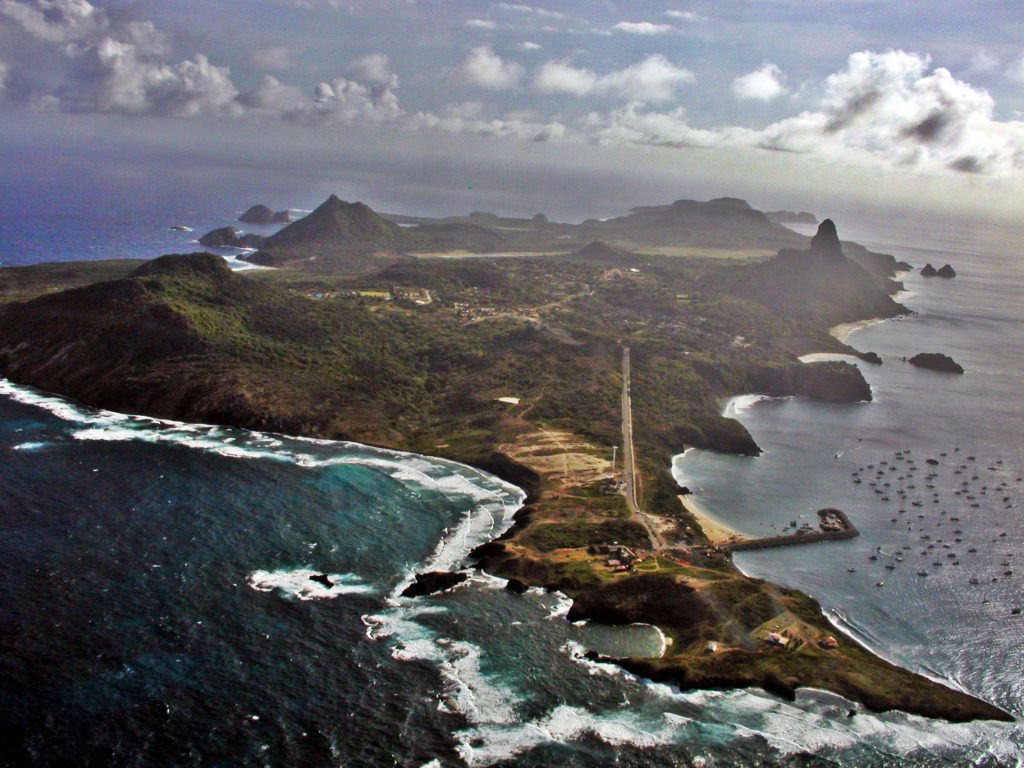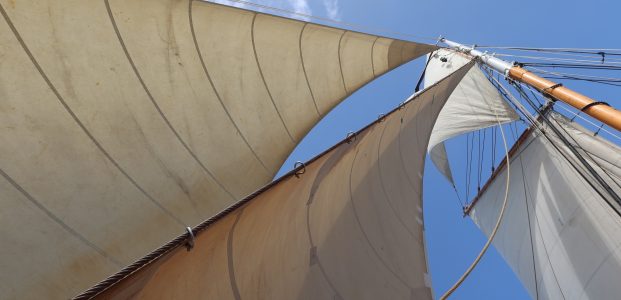Reading: An Unsung Hero (Michael Smith) & The Well at the World’s End – A J McKinnon (finished)
Weather: Wind up and down but annoyingly shifted round to the south a bit – SSE 2-4.
Thought for the day: The Dutch name for an adjustable spanner is a barco, which coincidentally (?) is the same word as for a Bacardi and Coke ….
Evening meal: Chicken and chorizo gumbo with rice and salad (American inspired dish with paprika and oregano)
Course: 095-110oC depending on wind shifts
Distance covered: At 1200 we had done 2,186 miles
Wildlife headcount: A few boobies but not much else – they don’t seem to want to go the way we are going now.
It’s taken 2,000 miles of the trip, but finally we learnt how to tack yesterday. Actually the plan was not to learn at all if the wind had gone to plan, but it didn’t. The reason? … Well, in front of us is a series of islands called Fernando de Noronha. They stretch from west to east for around 100 miles off the Brazilian coast. In between the islands is a bit tight and shallow, maybe possible in completely calm conditions, but not in the wind and sea which we have, so we have to go round them. This tack has been even worse than expected and though doing 090oC or above since tacking, our course over the ground has, at its worst, been around 060oC. We have discovered the Guiana current and it is annoyingly pushing us back towards the equator. However, we have got to stick with it, so we have carried on today and slowly the wind has shifted. We were eventually back to heading due east over the ground early this morning. We will have to do this for a while to get enough easting to clear the islands.
During the morning the wind compounded its annoying ways by dropping and then coming back, so shaking out reefs was not an option, but in the lulls we were significantly under-canvassed. Wind – you have to love it as it drives us forwards, but you have to hate it when it drives us forwards in the wrong direction.
We then decided to change the staysail back to the new one. If we are going to be going to windward, we might as well do it with better sails. This is a long slow process and took around 3 hours in total. First the old one has to be dropped, except it doesn’t drop – it has to be hauled down. The friction of the shackles on the forestay mean that, even with the weight of this sail, it will resist gravity without a downhaul line. Then Erik has to perch on the bowsprit in a harness and take all the shackles (which hank the sail onto the forestay) off, one by one without dropping any. He only dropped one pin, but luckily that dropped into the sail and not the sea. Then the whole process has to be reversed for the new one. The main issue while all of this is going on is that the boat is much less manoeuvrable. Take away the main sail in the foretriangle and, not surprisingly, she tries to luff hard all the time, something she did while I was on the helm. It took easing the mizzen sheet and backing the jib to get her back on track. So, we had to head further downwind than we wanted while doing the change, so when Jet woke up early she just turned the engine on to try and maintain the easting without going back on ourselves.
The engine has then stayed on all day to try and keep speed up and help us clear Fernando da Noronha. These islands are by far and away the most easterly point of Brazil and after them the coast bows back to the west, so once clear of them we can afford to head more west of south and things should get a little easier, but I may have said that before, so let’s not tempt fate! There are twenty one islands in the archipelago in total, but only the main island is inhabited with about 3,000 residents. In 2001, UNESCO designated it as a World Heritage Site because of its importance as a feeding ground for tuna, sharks, turtles, and marine mammals.
There is a low pressure area off the Brazilian coast which may put a spanner in the works in a few days time, so let’s hope we can get ahead of that.


